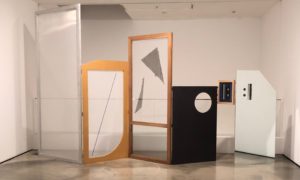“Is this world worthy to be destroyed?” Jung Jihyun’s double vision probes realities of public art and a wider perception of alternate narratives in the urban environment.
Jung Jihyun: Multipurpose Henry
Atelier Hermès Dosan Park, Seoul, KR
9 March – 5 May 2019
The sculptures of JUNG Jihyun (b. 1986) engage with the aesthetic sensibility inherent in public art which occupies space in the contemporary cityscape. The sculptures and statues characteristic of this genre project a disembodied presence, the result of being neglected and forgotten to the point of becoming effectively invisible to urban dwellers.

“The commemorative function which is closely related to the memory of the power in authority gradually diminished after the modern period, and the term of modernism accelerated abstraction of sculptures. Eventually, numerous sculptures that take up urban spaces in today’s world are positioned somewhere between traditional monuments and abstract decorations. And although they are placed in the center of the city, they seem to exist by pushing aside from view and interest of urban people.”
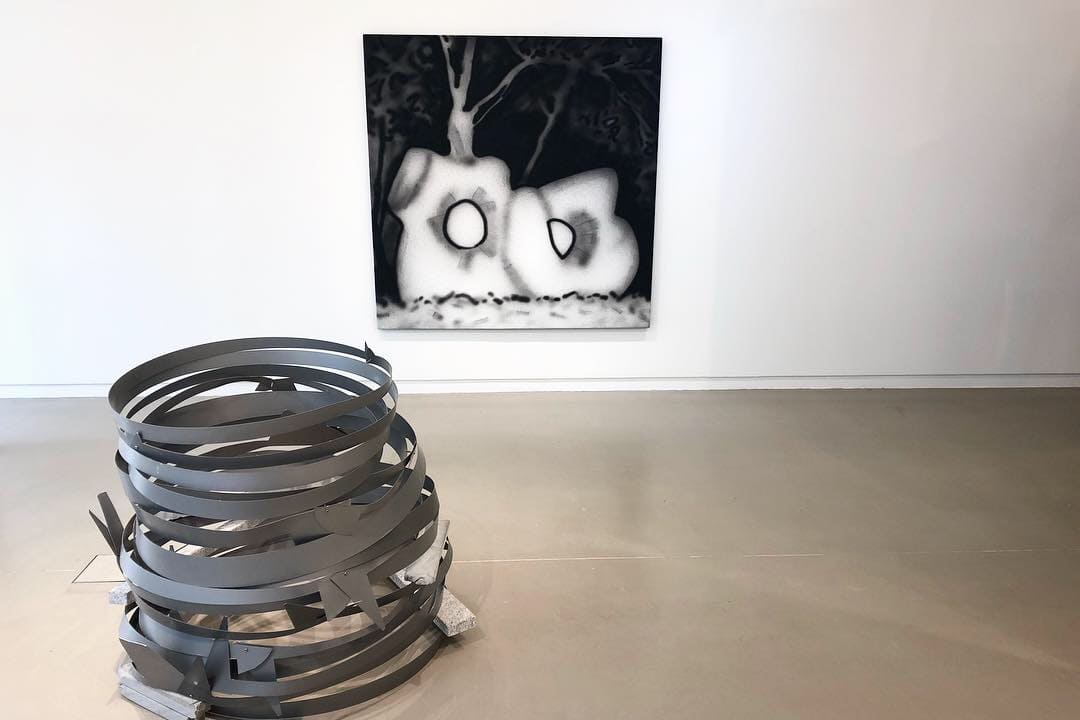 Jung Jihyun, 무한 메탈 Infinite Metal (2019), aluminum, stone, cement, 70 x 70 x 70 cm; 나무와 동낭 Bronze and Trees (2019) acoustic insulation, hard-gloss paint, 120 x 122 x 3 cm
Jung Jihyun, 무한 메탈 Infinite Metal (2019), aluminum, stone, cement, 70 x 70 x 70 cm; 나무와 동낭 Bronze and Trees (2019) acoustic insulation, hard-gloss paint, 120 x 122 x 3 cm
Jung’s works echo this indeterminate agency, presenting fragments and byproducts of these elements of urban scenery in the gallery context. His casts of public sculptures and statues, together with repurposed urban detritus such as billboards and discarded electronic products, reveal alternative narratives speculating on differences in perspective between seeing and perceiving art as such.
 installation view of Jung Jihyun: Multipurpose Henry (2019), Atelier Hermès, Dosan Park , Seoul KR
installation view of Jung Jihyun: Multipurpose Henry (2019), Atelier Hermès, Dosan Park , Seoul KR
“The scenery of the gallery suggested as a changeable and transient course turns into another scenery by encountering individual senses of each viewer. Jung seems to seek for a new order through disquieting attempts triggered by the urban and living space.”
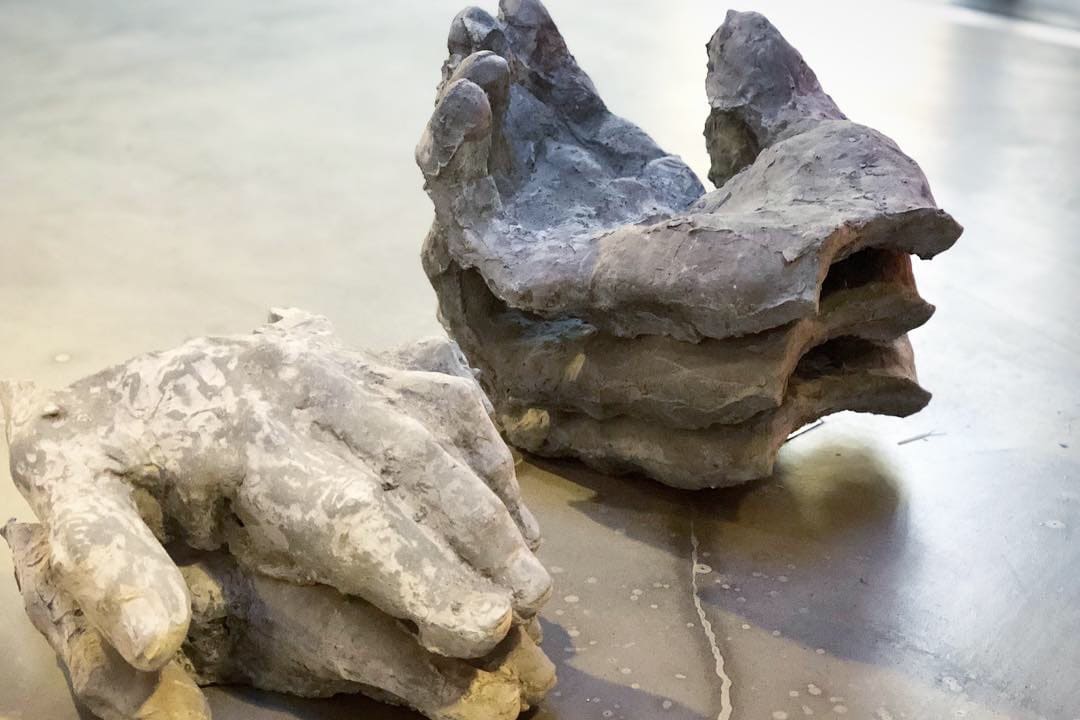
Of note are Jung’s casts of hands belonging to public statues of heroic figures in Korean history: the grenade-wielding right hand of activist Kang Woo-kyu installed in front of the old Seoul Station (Culture Station 284) in 2011, the left hand of revolutionary Jeon Bong-jun installed in 2018 at Jonggak intersection, and others. These can be critically interpreted as the artist’s attempts to expose the chasm dividing the physical presence and semantic absence of these historical figures, appropriated and reduced to fictions for the purposes of political agenda.
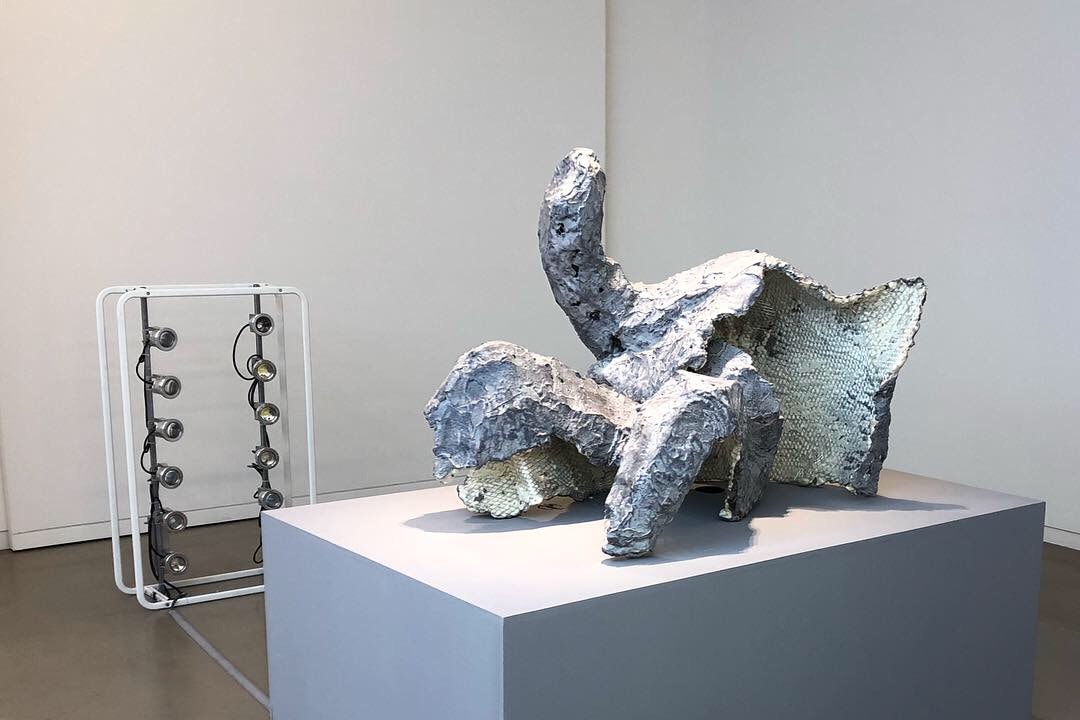
The exhibition’s title refers to British sculptor Henry Moore, whose representative style simplifies and abstracts the traditional image of the human form. “It connotes his sentiment in viewing the sculptures emulating the artistic style of a modern master that appear in diverse contexts many places in a city and their byproducts.”
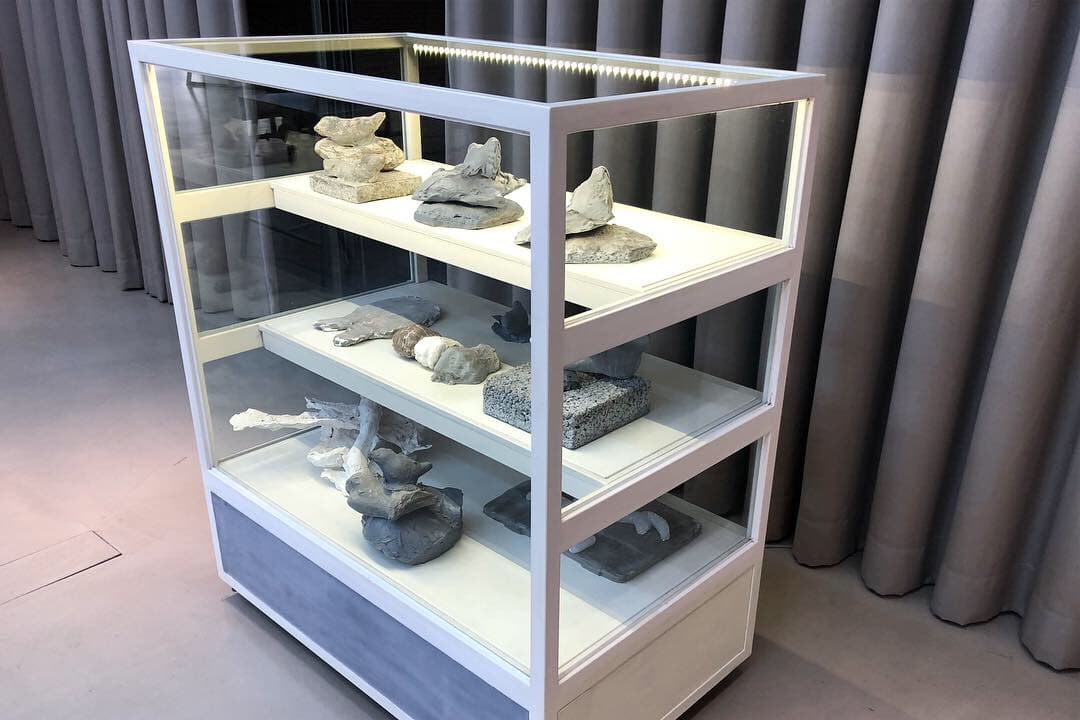 Jung Jihyun, 진열장 Display Cabinet (2019), cement, plaster, mixed media, 116 x 110 x 60
Jung Jihyun, 진열장 Display Cabinet (2019), cement, plaster, mixed media, 116 x 110 x 60
In light of this art historical reference, Jung’s reappropriation of such canonical sculptural bodies assumes an added layer of depth and profound evocative potential. Curator Yunkyoung Kim tersely questions in the essay accompanying the exhibition: “Is this world worthy to be destroyed?” Jung Jihyun proposes a different way forward, the artist’s own hands physically pointing the way. “The gallery unfolds new possibilities of another order sought through rebellious attempts triggered in urban living spaces.” It is the inherent nature of these multipurpose pieces; they serve as tool-and-methodology in probing the great doubt of such a kong-an in the contemporary psyche.
Andy St. Louis (2019.3.10)
